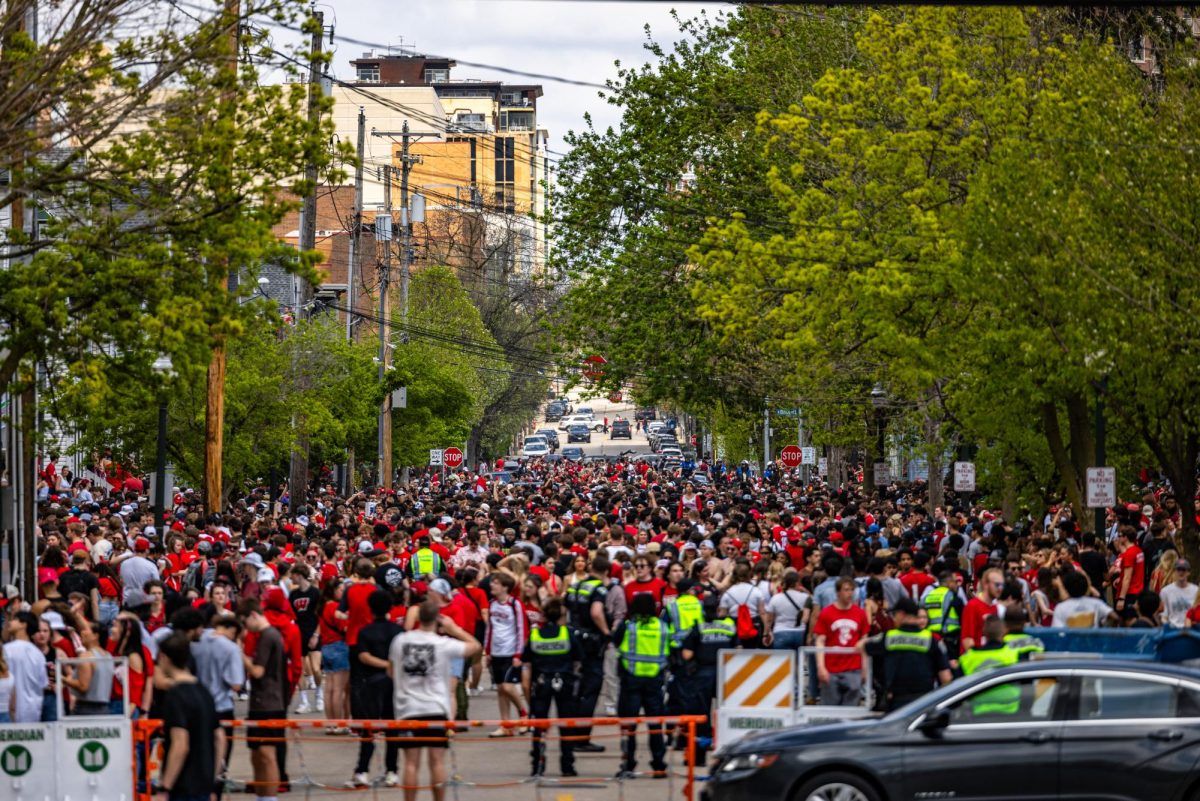As the oldest non-emeritus professor at the University of Wisconsin with five doctoral degrees, Waclaw Szybalski has taught “around 10 Nobel Prize winners” during his scientific career, which spans over 40 years.
But Szybalski, who has been called the father of gene therapy, has not always had a pragmatic life. At 18, he lived in a reality where something as simple as attending university could mean death.
Still working after most academics hang up their lab coats, Szybalski claims he “hasn’t had time to retire,” with a twinkle in his eye.
Szybalski is proud of the fact he often rides his bike to work from his home on the west side of Madison where he lives with his wife Elizabeth, but it is not unusual to see him cross-country skiing across frozen Lake Mendota.
Born in 1921 in Lwow, Poland, Szybalski had “a wonderful childhood and lived in a beautiful country.” He compares Lwow to a mid-size Midwestern town.
In 1939, Szybalski’s life turned upside down when the former Soviet Union and Nazi Germany made a pact to divide Poland in half. Germany would take 49 percent; Russia, 51 percent. The pact was made in August of 1939, and World War II started in September of 1939.
“Most of the war was like being a rabbit during hunting season,” Szybalski said. “Hitler attacked from the west, and the Soviet Union attacked from the east. Poland fought for a month, then gave up.”
Life during the war was “ghastly” for Szybalski, in part because his native Poland had been taken over by invaders. Schools and businesses were shut down. Then, soldiers started to take over Polish homes and forced families to live with Soviet families.
“They came to your home and said it wasn’t yours anymore. You lost all privacy, and they took away all of your valuables,” Szybalski said.
During this time, Szybalski was busy “defending his country underground” and attending the Lwow Institute of Technology, since the Soviets opted to leave universities open.
Szybalski’s class was 120 chemistry students, 100 of them Jewish. Szybalski noted that after Germany took over Poland, Jewish people were sent routinely sent to Treblinka to be hurt and killed. Out of the 120 students in Szybalski’s class, only 14 survived.
“Jews were systematically destroyed; the Polish were slowly destroyed,” Szybalski said, though he said the way people are killed does not make it any less abhorrent.
Szybalski’s sense of cunning and quick mind developed from these days of constant danger. He wryly notes, “everything we were doing was illegal, but you had to survive.”
After the war, Szybalski was deported to western Poland where he had to survive on his own. He helped rebuild the Gdansk Institute of Technology, which he later attended and earned a doctorate in chemistry.
The beginning of Szybalski’s mission to help people through science started when he assisted with the development of an anti-typhus vaccine in Poland. The vaccine was intended for soldiers, but also used on Jewish civilians and later was patented and used throughout the world.
In 1949, with a job offer and $45 in his pocket, Szybalski moved to the United States. His $45 didn’t help much after the realization that it wasn’t enough to start his initial job offer at the Cold Springs Harbor Labs in Long Island. Instead, he took a job as the head of an antibiotic pilot plant in Westchester, PA.
It was in Westchester that Szybalski discovered and patented one of the most widespread medical practices used today. He realized that certain bacteria were developing a resistance to antibiotics and proposed using multiple drugs in the same treatment so that bacteria would be unable to develop resistance.
“Multiple drug therapy was used to prevent resistance. Many scientists were worried about toxicity and the side effects. You have to realize at the time when I started it they thought one drug was enough for bacteria,” Szybalski said.
Szybalski’s multiple drug therapy is used today, most notably on AIDS patients, who require a drug “cocktail” consisting of three drugs, which strengthens a patient’s immune system.
When asked how he’s come so far in his extraordinary life, Szybalski just smiles.
“I’ve had luck. I’ve always tried to turn the luck in my own direction,” he said.









